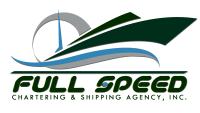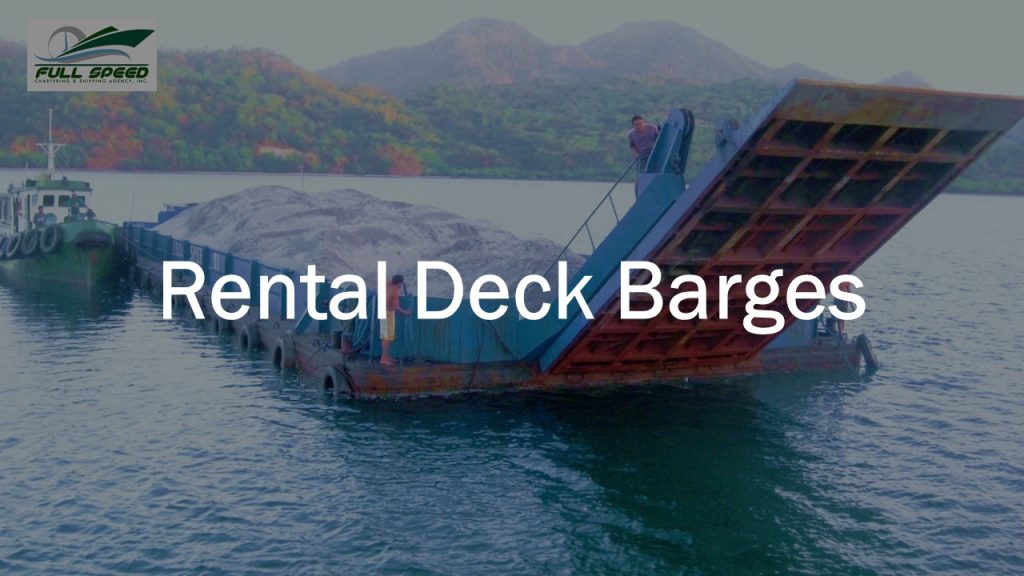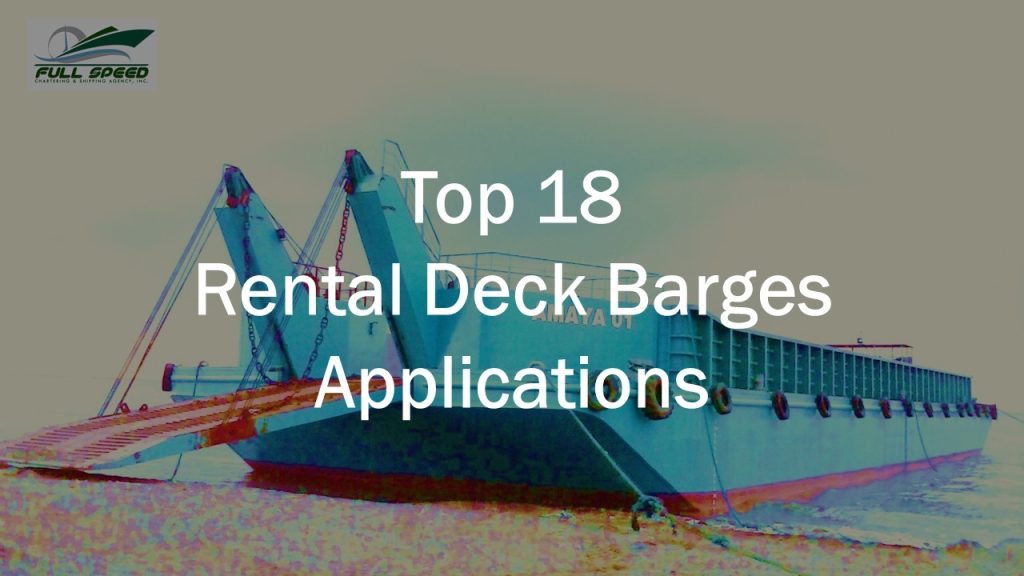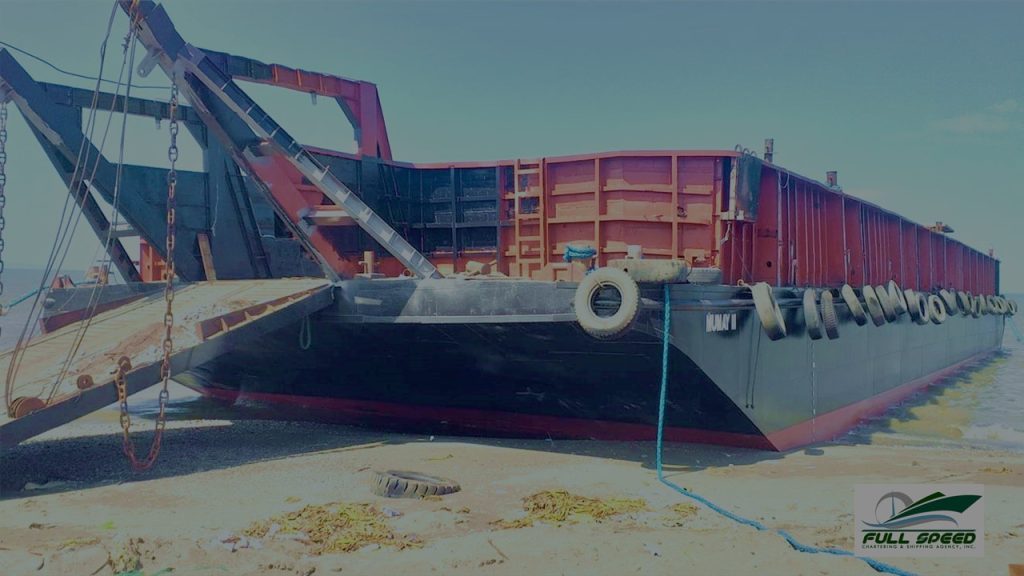Deck barges in the Philippines, also known as deck rafts, dories, flatboats, and scows, are a crucial component of the maritime industry, serving as versatile vessels that can transport heavy cargo across bodies of water. These flat-bottomed vessels are designed to carry various types of goods and equipment, able to carry heavy loads on their open decks, making them ideal for transporting bulky items such as construction equipment, large machinery, and even entire buildings. Making them an essential asset in construction projects, offshore drilling operations, and other maritime endeavors. However, one question often arises when it comes to water barges: how much weight can they actually carry?
Whether you are curious about the weight limits or considering utilizing a rental barge for your next project, read on to discover all you need to know about maximizing cargo capacity and efficiency aboard these indispensable workhorses of the waterways.
In this article, we will delve into the capabilities of seawater barges in the Philippines and explore just how much these mighty vessels can haul.
Click here to find out the best rental specifications of deck barges in the Philippines.
The Power Of Deck Barges
Deck barges are versatile and efficient vessels that play a crucial role in various industries, particularly transportation and construction. One of the most significant advantages of deck barges is their immense carrying capacity. These robust vessels can carry an impressive amount of cargo, making them ideal for transporting heavy and oversized loads that may be challenging or impossible to transport by other means.
The carrying capacity of seawater barges depends on various factors, such as their size, design, and configuration. Generally, these barges can transport hundreds or even thousands of metric tons of goods. The flat deck design allows for easy loading and unloading of cargo, making it convenient for transporting items like construction materials, machinery, equipment, vehicles, and even entire buildings.
Moreover, the large surface area provided by the flat deck enables efficient stacking and securing of cargo to ensure stability during transit. Deck barges also have excellent buoyancy due to their wide hulls and low drafts, allowing them to navigate shallow waters without compromising their load-carrying capabilities. This combination of high carrying capacity and maneuverability makes deck rafts an indispensable asset in many industries where heavy or oversized loads need to be transported efficiently and cost-effectively.
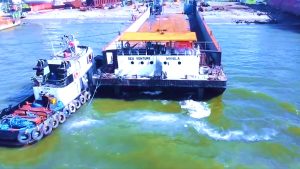
What Are Deck Barges?
Deck barges are flat-bottomed vessels designed to transport heavy cargo, equipment, and materials across bodies of water. These versatile vessels are primarily used in the construction, oil and gas, and shipping industries. One of the key factors that makes water barges popular for transportation is their large carrying capacity. Deck barges can carry a significant amount of weight due to their spacious deck area and sturdy construction.
Deck barges in the Philippines are specifically built with reinforced decks capable of handling heavy loads without compromising their structural integrity. This makes them ideal for transporting oversized or overweight cargo like machinery components or construction materials such as steel beams or concrete slabs. The ability to carry substantial weight makes rental dory an essential asset in industries where large-scale transportation is required.
Factors Affecting The Carrying Capacity Of Deck Barges
Deck barges are versatile vessels that play a crucial role in various industries, from the transportation of heavy loads to offshore construction projects. However, when considering deck barges for rent, it is important to understand the factors that affect their carrying capacity. One significant factor is the size and dimensions of the barge itself. Larger barges typically have higher carrying capacities due to their increased surface area and volume. This allows for more efficient loading and transportation of cargo, making them ideal for large-scale projects.
Another factor influencing a deck barge’s carrying capacity is its structural strength. Barges designed with reinforced decks and hulls can handle heavier loads without compromising safety or stability. The barge’s weight distribution also plays a crucial role, as unevenly distributed cargo may cause instability issues during transport. Proper weight distribution is achieved by strategically placing the cargo on the barge’s deck, ensuring that the load is evenly spread across its surface. This not only enhances stability but also prevents any potential damage to the barge or its cargo during transportation.
In addition to size, dimensions, and weight distribution, the shape of a barge can also impact its carrying capacity. Some barges have flat-bottomed designs, allowing for efficient loading and unloading of bulk materials such as gravel or sand.
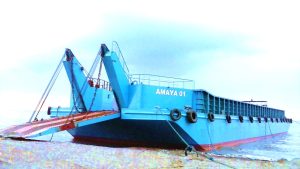
Maximum Weight And Size Limits For Deck Barges
Deck barges are an essential component of the maritime industry, commonly used for transporting heavy or oversized cargo. However, these vessels must adhere to maximum weight and size limits to ensure safe and efficient operations. Understanding these limitations is crucial for companies involved in logistics and shipping.
In terms of weight restrictions, rental deck barges in the Philippines typically have a maximum load capacity ranging from 1,000 to 2,500 tons. This limit ensures that the vessel can safely carry its cargo without compromising stability or posing a risk to crew members. It is important for operators to carefully calculate the weight distribution on deck barges to prevent overloading one area while leaving another empty. Additionally, it is worth noting that some regions may impose stricter regulations in terms of weight limits based on environmental concerns or infrastructure capabilities.
Size limitations also play a significant role in determining what can be transported using deck barges. Flatboats come in various sizes, typically ranging from 30 to 130 meters in length and 10 to 25 meters in width. These dimensions dictate the size of cargo that can be transported on deck barges. For example, smaller deck barges may be suitable for carrying construction materials such as gravel, sand, or concrete blocks. At the same time, larger deck barges can accommodate much larger cargo, such as heavy machinery or even entire buildings. The size of the cargo is not only determined by the length and width of the barge but also by its weight-bearing capacity.
In addition to size limitations, certain regions may also impose restrictions on the type of cargo that can be transported using scow. This is particularly true when it comes to hazardous materials or substances that pose a risk to the environment.
Key Features And Specifications
Deck barges are versatile and essential vessels used in the maritime industry for various purposes. These flat-bottomed boats are specifically designed to carry heavy cargo on their open deck, making them ideal for transporting oversized and bulky items. One key feature of water barges is their large deck space, which allows them to accommodate a wide range of cargo types, including construction materials, equipment, and even vehicles.
Deck barges typically come in different sizes, ranging from small units to massive vessels capable of carrying thousands of tons of cargo. This flexibility allows them to cater to diverse needs across industries such as construction, oil and gas exploration, and infrastructure development. Moreover, these barges often feature strong steel construction that ensures durability and stability during transportation. This robust design also enables them to withstand harsh weather conditions and rough seas.
Another notable specification of seawater barges is their shallow draft capability. This means that they have a relatively low depth, allowing them to navigate through shallow waterways and reach areas that are inaccessible to larger vessels. This makes deck barges an ideal choice for projects in rivers, canals, and coastal regions with limited depth.
Deck barges also offer a large open deck space, providing ample room for various types of cargo. This versatility allows them to transport not only heavy machinery and equipment but also bulk materials such as gravel, sand, or even containers. In addition to their shallow draft capability and spacious deck space, deck raft are also known for their stability and durability. These barges are designed to withstand rough weather conditions and turbulent waters, making them suitable for transporting cargo across open seas.
Deck barges typically have strong hulls that can withstand heavy loads without compromising their structural integrity. This makes them particularly useful in construction and mining projects where large equipment needs to be transported to remote locations or areas with limited infrastructure.
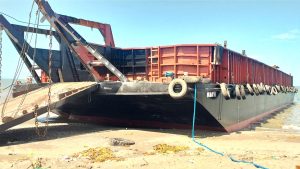
Versatility In Cargo Transportation
Deck barges are a highly versatile option for cargo transportation, offering a range of benefits to industries across the world. These flat-bottomed vessels have an open deck that can accommodate various types of cargo, making them ideal for transporting oversized or irregularly shaped items. Whether it’s heavy machinery, construction equipment, or even entire buildings, dory vessels provide a reliable and efficient solution.
One of the key advantages of using deck barges is their ability to navigate shallow waters and reach remote locations. With their shallow draft design, these vessels can access areas that may be inaccessible to other types of cargo ships. This makes them particularly valuable in regions with challenging terrain or limited infrastructure. Additionally, deck barges can be used in both inland waterways and coastal areas, providing flexibility for transportation routes.
Deck barges also offer the advantage of easy loading and unloading capabilities. Due to their design, rental flatboats have flat surfaces that allow for easy loading and unloading of various types of cargo. This feature eliminates the need for specialized equipment or complex procedures, making the process much more efficient and time-saving. Whether it is heavy machinery, construction materials, or large containers, deck barges can accommodate a wide range of cargoes.
Furthermore, the open deck space on these vessels allows for flexible arrangements and secure stowage of goods. This means that items can be arranged and secured in a way that maximizes space and minimizes the risk of damage during transportation. The open deck space also enables scows to transport oversized or irregularly shaped cargo that may not fit into standard shipping containers or trucks.
In addition to their versatility in accommodating various types of cargo, water barges are known for their stability on the water. Their wide and flat surfaces distribute weight evenly, reducing the risk of tilting or tipping over during transit.
Examples Of Deck Barge Applications
Deck barges are versatile and widely used in various industries for their ability to transport heavy equipment, materials, and even buildings. One of the most common applications of seawater barges is in the construction industry. These floating platforms provide a stable surface for cranes, excavators, and other machinery to perform tasks such as loading and unloading materials or placing heavy objects with precision. Deck barges are also used during the construction of bridges and piers, where they serve as a temporary work platform for workers to carry out their tasks safely.
Another important application of deck barges is in the oil and gas industry. These specialized vessels can be equipped with drilling equipment to explore offshore oil fields or support existing drilling operations. They can also be used as storage units for oil or gas before it is transferred onto larger tankers or pipelines. Deck barges are highly versatile in the oil and gas industry due to their ability to transport heavy equipment, supplies, and personnel to offshore platforms. They play a crucial role in supporting exploration, drilling, production, and maintenance activities.
When equipped with drilling equipment, deck rafts become floating drill rigs capable of conducting offshore drilling operations. These rigs are essential for exploring new oil fields or extending existing ones further into the sea.
Another maritime dory application is for mining companies that operate in coastal areas. These companies use deck barges to transport heavy equipment and materials needed for mining operations, such as excavators, trucks, and conveyor systems.
Deck barges are also commonly used in the construction industry for various purposes. They provide a stable and reliable platform for heavy machinery and equipment, allowing construction companies to carry out complex projects in offshore locations. These marine barges can be used for activities such as pile driving, concrete pouring, and even building temporary structures.
In addition to their role in the exploration, drilling, production, mining, and construction industries, flatboats serve a vital purpose in the transportation of goods.
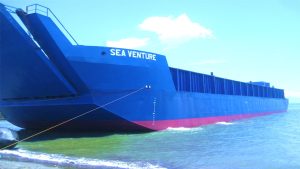
Advantages And Limitations Of Hiring Deck Barges
Deck barges are essential marine vessels used for transporting heavy cargo across various bodies of water. These flat-bottomed boats offer several advantages that make them a popular choice in the shipping industry.
First, deck barges have a large open deck space, allowing for easy loading and unloading of goods. This feature makes them ideal for carrying oversized or irregularly shaped items, such as construction equipment or large storage tanks.
Another advantage of using scows is their versatility. These vessels can navigate both shallow and deep waters, making it possible to transport goods to remote areas that are not accessible by larger ships.
Additionally, water barges can be easily modified to suit specific cargo requirements. For example, they can be equipped with ramps or cranes to facilitate the movement of heavy machinery onto and off the barge.
Furthermore, deck barges can also be used for the temporary storage of goods. They provide a secure and stable platform for storing items before they are transported to their final destination.
In addition to their versatility, deck barges also offer cost-effective transportation solutions. Compared to larger ships or trucks, seawater barges have lower operating costs and fuel consumption. This makes them an economical choice for transporting goods over long distances or in areas with limited infrastructure.
Harnessing The Hauling Potential Of Deck Barges
Deck barges are an indispensable tool in the maritime industry, heralded for their unmatched hauling potential. These versatile flat-bottomed vessels have an open deck, making them ideal for transporting a wide range of cargo across rivers, lakes, and coastal waters. Deck rafts can carry heavy equipment, construction materials, bulk goods such as coal or grain, and even oversized items like wind turbine blades. With their sturdy construction and large carrying capacity, these barges are capable of handling even the most demanding transportation tasks.
One of the key advantages of deck barges is their ability to transport oversized or irregularly shaped cargo that cannot be accommodated by other types of vessels. The open deck allows for easy loading and unloading using cranes or other specialized equipment. This makes marine dories particularly useful in industries such as construction and energy production, where large components need to be transported to remote locations with limited infrastructure.
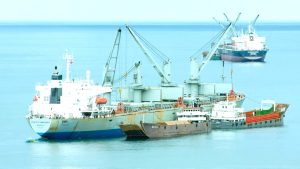
Are You Looking For A Rental Deck Barge Company?
If you are in need of a rental deck barge company in the Philippines, look no further than Full Speed Chartering and Shipping Agency, Inc. With their years of experience in the industry and wide range of services, they are your go-to choice for all your barge rental needs. Whether you need to hire a deck barge for transportation or as a floating work platform, Full Speed Chartering and Shipping Agency, Inc. has got you covered.
- Email us: info@fullspeedchartering.com
- Call our 24-hour hotline: +63 939 375 3224
- Viber: +63 939 375 3224
- WhatsApp: +63 939 375 3224
- Facebook Messenger: Click here
- Click here to inquire
With a fleet of well-maintained and modern deck barges available for rent, Full Speed Chartering and Shipping Agency, Inc. ensures that you have access to the best equipment for your project. Our team of marine engineers and maritime professionals understands the importance of reliability and efficiency when it comes to renting a deck barge in the Philippines. They are committed to providing top-notch service that meets your unique requirements, ensuring smooth operations every step of the way.
Takeaway: How Much Can Deck Barges Carry?
In conclusion, deck barges in the Philippines are a versatile and efficient means of transporting heavy cargo on waterways. Their carrying capacity varies depending on their size and design, ranging from a few hundred tons to several thousand tons. Factors such as the type of cargo, draft limitations, and navigational restrictions also affect the maximum load a deck barge can carry. Despite these limitations, deck barges remain an essential component of the maritime industry, facilitating the transportation of goods and materials across rivers, lakes, and coastal areas. Whether it is construction equipment, bulk commodities, or oversized cargo, maritime scows provide an economical and environmentally friendly solution for moving large quantities of goods.
Deck barges in the Philippines are versatile and efficient vessels that can carry a vast range of cargo. With their large deck space and high load capacity, these barges are capable of transporting heavy loads such as construction materials, machinery, and oversized equipment. The specific carrying capacity of a flatboat will vary depending on its size and design, but some barges can carry up to several thousand tons of cargo. Deck barges play a crucial role in various industries, including construction, oil and gas, and transportation. Their ability to transport goods through inland waterways makes them an environmentally friendly option for moving freight.
